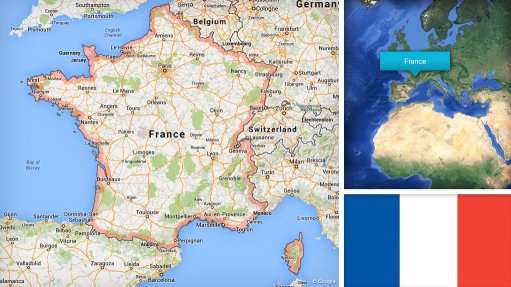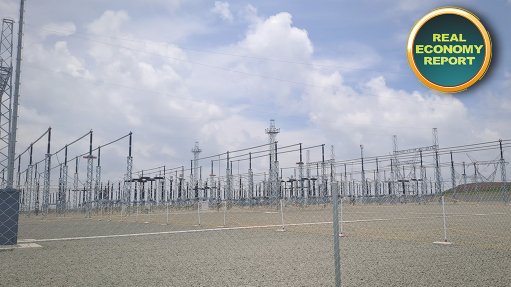Visually disturbing
Members of the electrical engineering profession are guilty of disturbing the visual environment. You may not have realised this, but it is so.
We erect power station chimney stacks that give off smoke, and we erect cooling towers that give off steam, which unreliable journalists tell the gullible public is smoke. We build power lines of sometimes high heights and often through green, unspoiled valleys. We cause residential areas to be crisscrossed with low-voltage domestic supply lines. All this, we, the electrical profession, justify based on that, if a country wants electrical power, if a country wants industry, then it has to suffer the visual impediment of all these structures. Sometimes bright-eyed bubble heads suggest supplying all the power using cables buried underground (regardless of cost) but do not know or understand that there are physical reasons for cables being a specific length and no longer – cables just can’t be as long as power lines and still supply power adequately.
The question arises: In the name of civilisation and comfort, how far are we (that is to say humans) allowed to visually alter the environment? What criteria are to be used? What is go/no go?
Let’s start with power lines. In general, these are routed outside environmentally sensitive areas. A notable exception is at Richards Bay, where the wetlands are crossed by no fewer than eight power lines, built to supply mines, refineries and aluminium smelters. It is a fine example of a lack of planning and it looks the part. Countrywide, there are a number of power lines but, at a maximum height of 50 m and generally no more than 30 m, not too obtrusive.
Then we move onto wind turbines. These have a height from ground to top blade tip of 150 m to 280 m, the latter being 80% of the height of the Eiffel Tower. In a wind farm, there will be up to 60 of these structures. The towers are visible for many kilometres and destroy any visual aspect of the environment. In Germany, the wind turbines are the subject of wide protests and the industry has slowed to a crawl. Rural Germans do not want a forest of 150-m-plus towers in a rural environment. (Spoiler alert: the German wind people are trying to sell the uninstalled turbines to South Africa to be installed along the Southern Cape coast; won’t that be pretty?)
So, here is the distinction: we do need power lines and power stations. We do not need wind turbines. They supply comparatively little power. They supply power intermittently. They are visually intrusive. Okay, install them if you must, but, please, not along the Southern Cape coast.
But now we have the real kicker. The SpaceX company has launched a whole lot of satellites that are visible at night and appear as ‘trains’ of bright lights, visible for about six minutes every hour or so (or so the Internet advises). In general, you have to be at the 51st parallel in the northern hemisphere to see this. Thus, to get a signal to distant persons and providing the Internet to deeply rural people, SpaceX now allows you to be ever minded, when star gazing, that technology is with us and nothing natural can ever avoid despoliation. It’s only time, trust me, before another trail of bright lights appears in the sky for the benefit of us in the southern hemisphere. And more and more. These satellites and wind turbines and the like exist only for one purpose: to enrich various corporations and individuals by the provision of a technology that mankind does not really need. One may argue that we deserve the visual intrusion: Who of the youth can name any of the stars and point them out? Who of the youth knows anything about wind turbines other than they are, uh, green, and uh, save the planet? Visually, we should take care. Sometimes what is done is irreversible.
Article Enquiry
Email Article
Save Article
Feedback
To advertise email advertising@creamermedia.co.za or click here
Comments
Press Office
Announcements
What's On
Subscribe to improve your user experience...
Option 1 (equivalent of R125 a month):
Receive a weekly copy of Creamer Media's Engineering News & Mining Weekly magazine
(print copy for those in South Africa and e-magazine for those outside of South Africa)
Receive daily email newsletters
Access to full search results
Access archive of magazine back copies
Access to Projects in Progress
Access to ONE Research Report of your choice in PDF format
Option 2 (equivalent of R375 a month):
All benefits from Option 1
PLUS
Access to Creamer Media's Research Channel Africa for ALL Research Reports, in PDF format, on various industrial and mining sectors
including Electricity; Water; Energy Transition; Hydrogen; Roads, Rail and Ports; Coal; Gold; Platinum; Battery Metals; etc.
Already a subscriber?
Forgotten your password?
Receive weekly copy of Creamer Media's Engineering News & Mining Weekly magazine (print copy for those in South Africa and e-magazine for those outside of South Africa)
➕
Recieve daily email newsletters
➕
Access to full search results
➕
Access archive of magazine back copies
➕
Access to Projects in Progress
➕
Access to ONE Research Report of your choice in PDF format
RESEARCH CHANNEL AFRICA
R4500 (equivalent of R375 a month)
SUBSCRIBEAll benefits from Option 1
➕
Access to Creamer Media's Research Channel Africa for ALL Research Reports on various industrial and mining sectors, in PDF format, including on:
Electricity
➕
Water
➕
Energy Transition
➕
Hydrogen
➕
Roads, Rail and Ports
➕
Coal
➕
Gold
➕
Platinum
➕
Battery Metals
➕
etc.
Receive all benefits from Option 1 or Option 2 delivered to numerous people at your company
➕
Multiple User names and Passwords for simultaneous log-ins
➕
Intranet integration access to all in your organisation

















